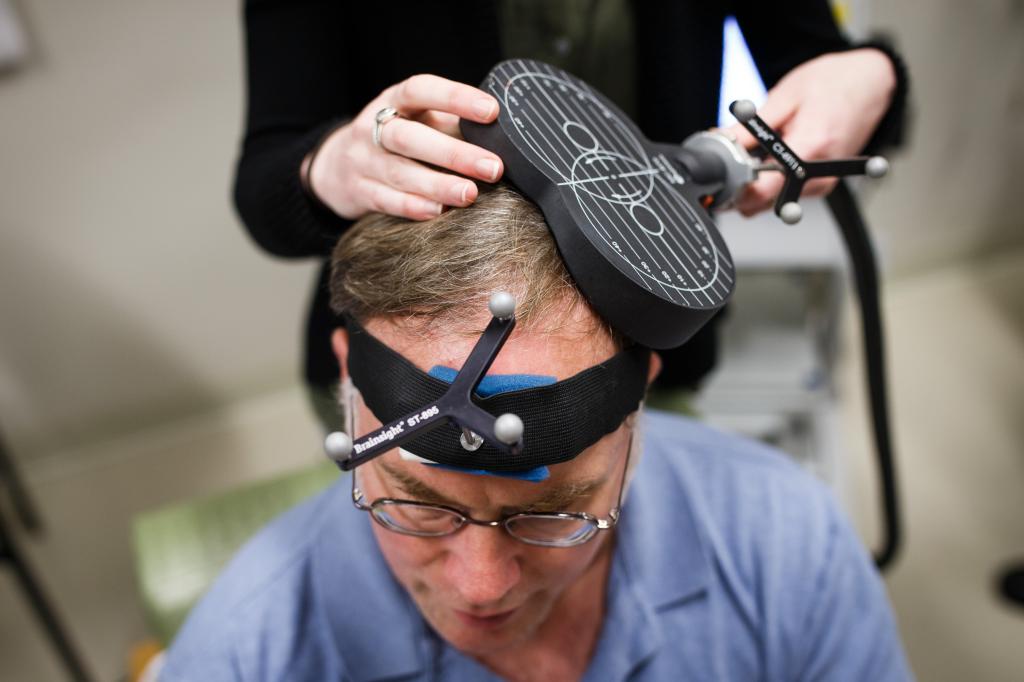mental health
Using magnets to treat depression sounds like a mad scientist’s plan, but it actually works.
This treatment, known as TMS (transcranial magnetic stimulation), is backed by years of research and approved by the Food and Drug Administration.
This is a completely non-invasive treatment that delivers magnetic pulses that stimulate nerve cells in parts of the brain involved in mood control and depression.
And a new study from UCLA Health found that certain types of TMS can be effective for patients with major depression, even after multiple antidepressant treatments have failed.
The UCLA therapy, Repetitive Transcranial Magnetic Stimulation (rTMS), works so quickly that it can reduce symptoms of depression within a few days.
“What’s most interesting is that these patients begin to report improvement in symptoms within a week of starting treatment,” said Dr. Michael Leuchter of the Semel Institute for Neuroscience and Human Behavior. stated in a news release.
Some insurance plans may even cover the cost of surgery.
What is TMS?
TMS is a treatment that uses magnetic coils or paddles to generate a strong magnetic field to alter electrical activity in the brain.
The procedure was first developed in 1985 and is now used for a variety of mental health and brain-related conditions. According to the Cleveland Clinic.
Depending on the type of treatment, the magnetic coils may be placed directly on the scalp, or the patient may wear a type of helmet with magnetic coils attached.
It’s not entirely clear to medical researchers how TMS works, but it’s thought to stimulate areas of the brain that become less active during depression. According to the Mayo Clinic.
The procedure is non-invasive and requires no surgery, injections, or anesthesia. Also, apart from some discomfort from wearing the magnetic coil and the tapping noise it makes, it is usually painless.
TMS for depression
The FDA approved the use of TMS to treat major depressive disorder in 2008. This treatment is usually used when other treatments, such as antidepressants, have failed to reduce symptoms of depression.
In addition to depression, the FDA has approved the use of TMS to treat obsessive-compulsive disorder (OCD) and migraines, and for smoking cessation.
Beyond these health concerns, TMS is also used to treat drug and alcohol addiction, Alzheimer’s disease, eating disorders, Parkinson’s disease, post-traumatic stress disorder (PTSD), schizophrenia, and complications from stroke. It has been.
In 2016, Michele Pagano of Connecticut told the Post she was laughing for the first time in months and was “overwhelmed” after undergoing TMS treatment for depression.
“I was able to reprogram myself within six months.” [after] “I’ve lived with depression, anxiety, and sadness for over 20 years,” Pagano said, adding that the surgery left her with “more debt than I can ever repay.”
rTMS therapy
For the new study, researchers at the UCLA Semel Institute looked at the results of hundreds of patients who received rTMS therapy at UCLA Health from 2009 to 2022.
Most rTMS patients received 20-30 minute treatment sessions five days a week for six to eight weeks.
The research results are Published in this week’s Psychiatric Research Journalfound that 54% of patients had at least a 50% improvement in their depression symptoms.
“At UCLA, we are taking a unique approach to rTMS treatment,” said Leuchter, lead author of the study. “In our ‘precision TMS’ model, patients see a psychiatrist at every treatment session and have their symptoms measured weekly.”
Initial improvement reported within five or 10 treatments predicted how well the patient would respond throughout the treatment period.
Leuchter said this could help doctors decide whether or when to change their approach for individual patients.
Load more…
{{#isDisplay}} {{/isDisplay}}{{#isAniviewVideo}}
{{/isAniviewVideo}}{{#isSRVideo}}
{{/isSR video}}
